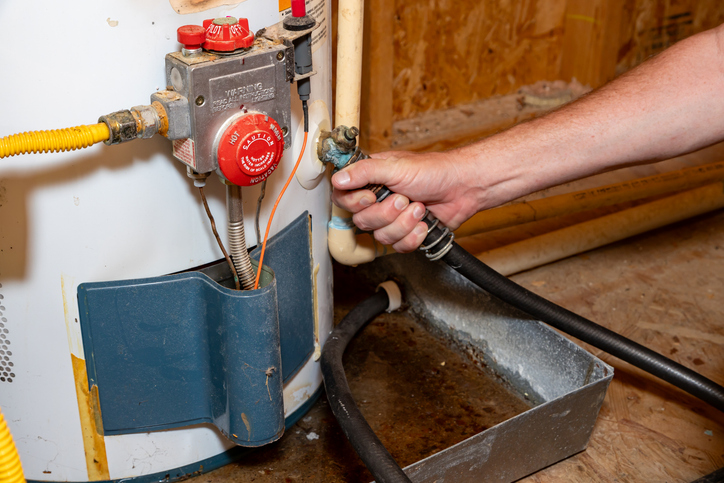As the cold weather approaches, many of us will descend into our basement or utility room to mark the Great Seasonal Changing of the Furnace Filter event. But far fewer of us will perform the same kind of regular maintenance on the furnace’s usual neighbor, the hot water heater.
Of course, like you, Maertin Heating & Cooling understands that water heaters don’t have filters. However, the mineral particles present in the water build up over time at the bottom of your appliance. For this reason, home maintenance experts recommend draining your hot water heater annually, which is less often but more a little more complicated than seasonal filter replacements.
As the sediment builds up in the water heater, it can clog the outflow, corrode components, and displace volume. All of this can lead to a decrease in the efficiency of your water heater and less consistent reliable hot water. In some cases, the sediment hardens with the heat from the appliance and can cause popping sounds. The longer this sediment goes undrained, the harder and more frequently the appliance has to work, which will lead to early failure. That failure might only mean you’re without hot water while you wait for a replacement, but if sediment has corroded the heating chamber or clogged pipes, you could be looking at gallons of scalding water in your basement.
Whether you want more hot water, lower utility bills, a longer life for your water heater or a combination of all three, it’s time to drain your water heater.
The challenge here is that you’re dealing with gas and/or electricity, and very hot water, so it’s important to be very careful.
First, disconnect the power from an electric heater and shut off the gas for gas heaters. It’s important to make sure the heating element is off before you drain the tank to prevent damaging it. Now, turn off the water supply.
Draining the tank takes some patience. Most experts recommend turning off the water heater before bed and then draining it the next morning. If you don’t want to face the morning without a hot shower, you can speed this up by running your dishwasher, washing clothes with hot water, taking a long relaxing bath and letting your teen take the unlimited shower they’ve always dreamed about. You can then drain the heater after two hours of cooling with proper precautions.
Make sure your drainage hose is tightly sealed to the water heater to avoid scalding water spraying out from the connection while you’re opening the valve. Have a clear plan for where the discharged water will go, be it to the outside, into a floor drain, or by having a sufficient amount of buckets). When you feel assured in your drainage plan and the temperature of your water, open the water heater drain. Experts recommend you open the closest hot water tap above the appliance, in a kitchen or bath, to depressurize the plumbing system and speed draining.
Once the heater has drained, turn the water supply on and off to rinse out any remaining sediment, repeating the process until the water runs cold and clear.
Now close the drain valve, turn on the water supply and let the tank refill. When the tank is filled, reconnect the electricity or gas and restart the appliance.
If you find evidence of scaling or bacterial growth, make an appointment with Maertin Heating & Cooling to sanitize and descale the heater. If this all sounds like a little too much for your DIY skill level, give us a call and we’ll take care of it safely and effectively.
Maertin Heating & Cooling makes sure your home is comfortable, in every room. If you have spaces that are under or over heated, give us a call at 708-479-9350 or send us a message to discuss zoned systems.



